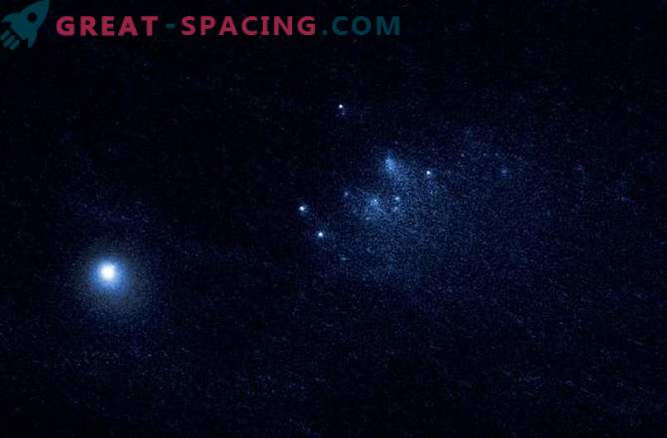
Comet 332P / Ikea-Murakami is doomed to 150 years of solar decay.
For 4.5 billion years, the comet revolved around the Solar System, but due to a series of gravitational disturbances, it changed its orbit, being closer to the Sun. Ultimately, it doomed her to a slow death from decay. The Hubble Space Telescope was lucky to shoot a successful series of images of this event.
Formed from ice, dust and pieces of cosmic stones left over from the origin of the planets, comets for billions of years dangle in the outer solar system, literally doing nothing. Many of these ice blocks huddle in the Kuiper belt, beyond the orbit of Neptune, feeling a weak gravitational force emanating from the sun.
But, if chaotic gravitational oscillations push them out of a stable zone, then the force of gravity of the Sun can prevail, and ice objects will begin to fall steadily into the depths of the Solar System. Some find a place in the orbit around the Sun, periodically looking back into the inner region. But others evaporate too quickly.
Comets like the 332P have orbits with altered gravity. This puts objects in an uncomfortable position: a remote distance from the Sun saves from rapid collision and burning, but a sufficiently close one leads to a slow death. The bright comet 332P was discovered in 2010 by two amateur Japanese astronomers Kaoru Ikei and Shigeki Murakami. When the brightness of the comet is greatly increased, it says only one thing: it heats up. The increase in brightness was caused by the sublimation of ices of explosive vapors and dust in space, which led to the scattering of light.
In January of this year, Hubble brought his gaze closer to the object and noticed that he not only generates a lot of steam and dust, but also throws pieces the size of a building. Now the comet is near Mars, outside of its orbit.
“We know that comets sometimes fall apart. But the reasons and the process itself remain a mystery, ”said David Jewitt of the University of California. - “The trouble is that the process itself is too fast and unpredictable. Therefore, we have little chance of obtaining useful data. But with the fantastic resolution of Hubble, it is possible not only to notice tiny pieces of a comet, but also to observe their transformation every day. This allows us to make the best measurements ever made. ”
Despite the small size of the comet (about 500 meters), the field of its debris stretched 3000 miles in length. But what is the reason for the breakup?
“Previously, astronomers believed that comets die after heating under the influence of sunlight. Because of this, their ices simply evaporate, ”said Jewitt. - “Then there is only a huge dead piece. But this observation is very important, as Comet 332P fragments itself right on the fly. ” The comet is falling apart as if it is being spun by the heat of the sun. As the light gradually heats its surface, the ice passes from solid to vapor, passing the liquid stage. This process is called sublimation and leads to the fact that the comet releases into the space a jet of steam and dust. Since it consists of loosely packed material, these rotating pieces come off. Hubble noted that after liberation from centrifugal force, 25 large pieces had already separated from the comet. Now she is dying in the inner part of the solar system. And it looks fascinating.
Since the comet has a six-year orbit around the sun, these emissions will occur every 6 years. This situation allowed astronomers to calculate how long a disintegration period would take. “If this happens every 6 years, which is equivalent to a single orbit around the Sun, then the process will take 150 years,” added Jewitt. “From an astronomical point of view, this is a very short time. But this is a one way trip. ”
A team of researchers also noted that pieces of garbage are experiencing their own decay deaths, with the result that large pieces are broken up into smaller pieces and so on.











































